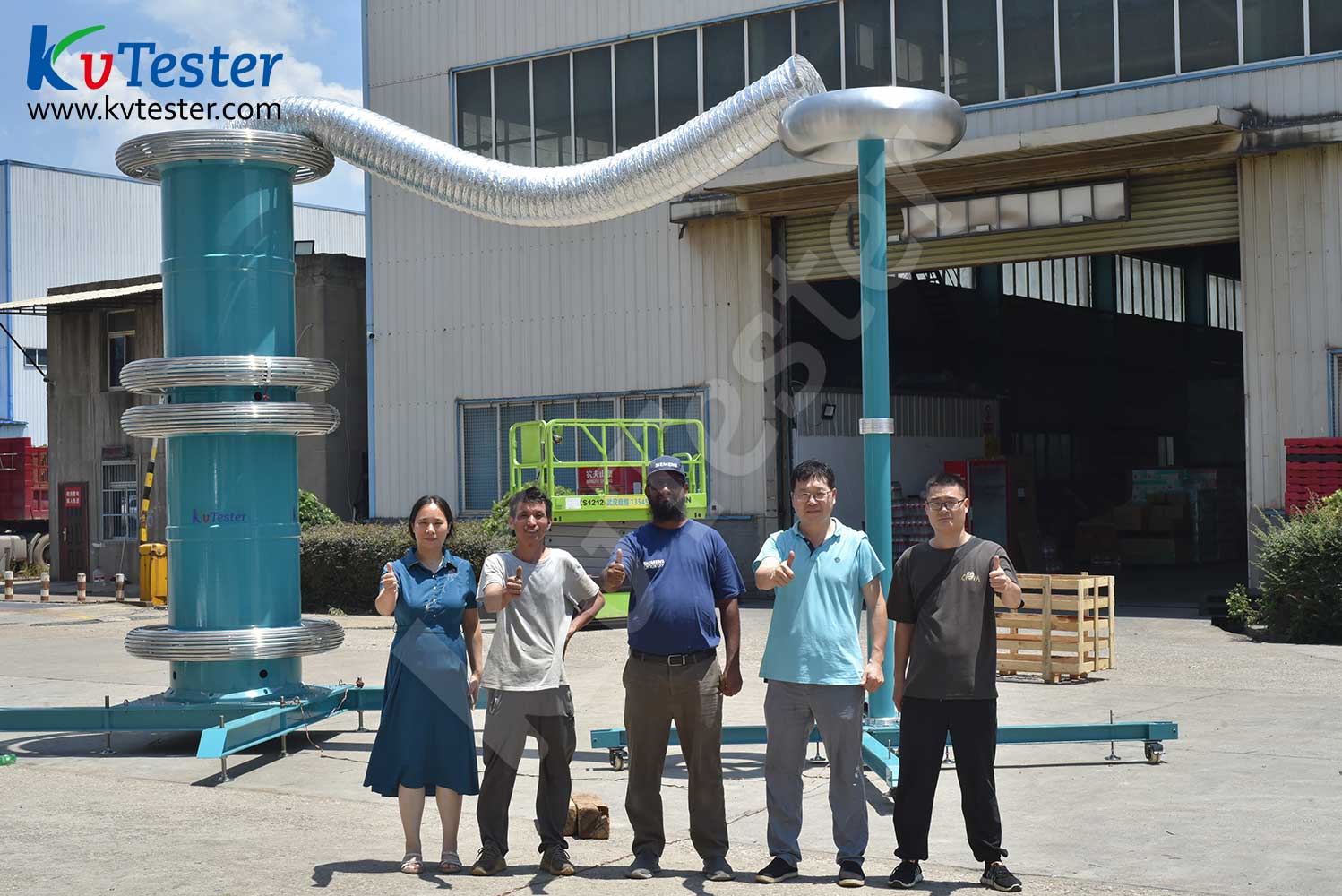The series resonant withstand voltage testing system plays an important role in the insulation strength testing of electrical equipment, but some common faults may occur in practical applications. The following will provide a detailed explanation of these faults and their solutions.
1. The voltage on the test sample cannot reach the required value
① Cause analysis:
It may be due to insufficient power capacity, which cannot provide enough energy to achieve the required voltage for the test sample. When the power capacity is small, it may not be possible to provide sufficient current to establish the required high voltage when facing high capacitance test samples.
The resonance frequency is inaccurate. If the resonant frequency deviates significantly from the design value, it may cause the system to fail to operate at its optimal state, resulting in the voltage on the test sample not meeting the requirements.
There are problems with the connection lines, such as poor contact and excessive line resistance. Poor connections can lead to energy loss and reduce the actual voltage on the test sample.
② Solution:
Check the power capacity to ensure it meets the requirements of the test sample. If the power capacity is insufficient, you can consider replacing it with a larger capacity power supply or using a parallel power supply to increase the output power.
Accurately adjust the resonant frequency. By adjusting parameters such as inductance and capacitance, the system can operate in the optimal resonant state. Use professional frequency measurement equipment to ensure the accuracy of the resonant frequency.
Check the connection lines to ensure that all connections are firm, reliable, and in good contact. For the problem of excessive resistance in the circuit, thicker wires can be replaced or the circuit layout can be optimized to reduce resistance losses.
2. Burning the intermediate transformer and endangering the personal safety of the testing personnel when the test sample breaks down
① Cause analysis:
At the moment of sample breakdown, a huge current and energy release will be generated. If the protective measures of the intermediate transformer are insufficient, it is easy to burn out.
The safety protection devices are incomplete, such as the absence of overcurrent protection, overvoltage protection and other devices, which cannot cut off the power supply in a timely manner when the test sample breaks down, resulting in the occurrence of danger.
The operators did not operate in a standardized manner, did not maintain sufficient safety distance during the testing process, or did not use safety protection equipment correctly.
② Solution:
Install comprehensive protection devices for the intermediate transformer, such as overcurrent protection, overvoltage protection, etc. When the test sample breaks down, these protective devices can quickly operate, cut off the power supply, and protect the intermediate transformer from being burned out.
Improve safety protection devices to ensure sufficient safety during the testing process. Install overcurrent protection, overvoltage protection, grounding protection and other devices, and regularly check the performance of these devices to ensure their normal operation.
Strengthen the training of operators to enhance their safety awareness and operational skills. Operators must strictly follow the operating procedures, maintain sufficient safety distance, and use safety protection equipment correctly during the testing process.
3. The harmonic superposition generated during the experiment resulted in unexpected breakdown of the test sample
① Cause analysis:
Power quality issues. If there are many harmonic components in the power supply, these harmonics may overlap with the fundamental wave during the test, causing the voltage on the test sample to rise and leading to accidental breakdown.
Improper selection of parameters for components such as inductors and capacitors in the system may result in harmonic resonance at specific frequencies, increasing voltage stress on the test sample and leading to breakdown.
External interference factors, such as the operation of nearby electrical equipment and electromagnetic interference, may introduce harmonics and affect the test results.
4. The high voltage generated by series resonance is difficult to meet the requirements of partial discharge testing
① Cause analysis:
The design of the series resonant system is unreasonable and cannot generate sufficient voltage to meet the requirements of partial discharge testing.
Partial discharge testing requires high voltage stability and purity, while series resonant systems may have issues such as voltage fluctuations and harmonic interference, which can affect the effectiveness of partial discharge testing.
The characteristics of the test sample may affect the voltage requirements for partial discharge testing. For example, high capacitance samples may require higher voltages to conduct effective partial discharge tests.
② Solution:
Optimize the design of the series resonant system to improve its output voltage capability. This can be achieved by increasing the capacity of inductors and capacitors, or by using higher performance power amplifiers.
Take measures to improve the stability and purity of voltage. For example, using regulated power supplies, filtering devices, etc. to reduce voltage fluctuations and harmonic interference.
Adjust the parameters and requirements of the partial discharge test based on the characteristics of the test sample. For high capacitance test samples, special testing methods or equipment can be considered to meet the voltage requirements of partial discharge tests.

The ZCVF-A series variable frequency series resonant withstand voltage test device adopts the method of adjusting the power supply frequency to achieve resonance between the reactor and the tested capacitor, thereby obtaining high voltage and high current on the tested object. Due to its low required power supply, light weight and small size, it has been widely praised and applied at home and abroad, and is a new method and trend of high voltage testing. This device is mainly designed for AC withstand voltage testing of cross-linked cables, hydroelectric generators, main transformers, busbars, GIS, etc. It has a wide range of applications and is an ideal withstand voltage equipment for high-voltage testing departments and power installation and maintenance engineering units at the local, municipal, and county levels. The equipment mainly consists of a variable frequency control power supply, an excitation transformer, a reactor, a capacitive voltage divider, and a compensation capacitor (optional).
Kvtester Electronics Technology Co.,Ltd. is a high-tech enterprise specializing in power testing, testing, research and development, production, and sales of testing equipment. It has been engaged in the electrical testing industry for many years, and its products are of high quality. We welcome customers to come and purchase. Service hotline: 0086-27-81778799, to learn more, visit the official website: www.kvtester.com





